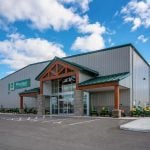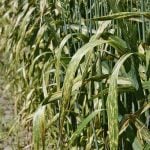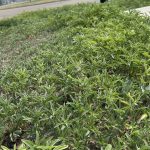Food waste decomposing in landfills is responsible for adding more than 56 million tonnes of greenhouse gas to the atmosphere each year.
Lori Nikkel, chief executive officer of Toronto-based Second Harvest, wants to change that.
The non-profit charity works across Canada to redistribute food that might otherwise end up in a landfill.
Nikkel, speaking to the House of Commons standing committee on agriculture about food security this fall, said 58 percent of food produced for Canadians, or about 35.5 million tonnes, is lost or wasted somewhere in the food chain.
Read Also

Agriculture needs to prepare for government spending cuts
As government makes necessary cuts to spending, what can be reduced or restructured in the budgets for agriculture?
“We work with thousands of food businesses from right across the supply chain to reduce the amount of edible food going to waste, preventing the unnecessary release of greenhouse gases,” she said.
Second Harvest works in the perishable food space, unlike food banks that typically acquire and distribute non-perishable items. Last year, the charity moved about $180 million worth of food, mainly fruits, vegetables and dairy products, on its revenue of $35 million.
It gets all its food for free.
The charities receiving the food are almost invisible, she said.
“There’s a network of 61,000 charities that people don’t consider,” said Nikkel. “We hear about food banks, and they’re very important and we support them, but there are only 4,500 of them.”
Seniors’ centres, community organizations, churches and others fall into the other category. They have small budgets and partnering with Second Harvest to get free food allows their money to be used for other things, such as hiring social workers or support staff.
Nikkel said research has shown that only four percent of businesses that have surplus food donate it.
Second Harvest has moved its food across the country and to the far North.
There is a greenhouse gas footprint to that, too, but she said in the hierarchy of food waste, people come first, followed by animals, compost and then the landfill.
Lowering emissions from food waste is simple, Nikkel said: mandate measurement and offer incentives.
“Have producers, manufacturers and retailers mandated to measure and monitor their waste, to set targets and to hit the targets, but provide incentives to do that,” she said. “As soon as you do that we’re going to lower this because prevention is far more important than diversion. Even in upcycling we want to prevent this at source.”
Food upcycling is another way to minimize or eliminate food waste and its associated emissions.
Upcycling is generally defined as using ingredients that wouldn’t have gone into human consumption, are procured using verifiable supply chains and positively impact the environment.
For example, in Okotoks, Alta., a company called GroundUP Eco-Ventures upcycles spent coffee grounds and brewer’s grains by dehydrating them, removing valuable oil from the coffee grounds, and milling both the grounds and the grain into flour.
The company says that every 1,000 kilograms of used coffee grounds upcycled saves the production of 340 cubic metres of methane gas.
It sells the upcycled products as gluten-free coffee flour, Brewer’s Barley Saved-Grain flour and coffee oil as a cosmetic.
In a podcast from Montreal’s SIAL food show, president and founder Shawn Leggett said it’s about getting every last dollar out of the feedstock.
It’s all part of the circular food economy that works to divert food waste for other use.
Dr. Sylvain Charlebois, known as Canada’s food professor, is a proponent of upcycling and predicts it’s a trend to watch.
He is also on the board at Second Harvest.
During his appearance at the agriculture committee, he said the concept needs attention.
“It could actually eliminate more food waste across the supply chain, repurposing waste into new products for the market,” he said.
But upcycling can also be as simple as the pre-packaged salads or store-made kebabs in grocery stores.
In Western Canada the Loop Resource program diverts waste groceries and other products to where they are best suited, including for human consumption and for animal feed.
Nikkel said any food rescue program is worthwhile because of the environmental benefits to keeping food from ending up in landfills.
“Most of the big food is coming from processors and manufacturers and producers,” she said of Second Harvest’s work. “We’ll get a call and they’ll say ‘We have 20 tractor trailer loads’ of whatever the product is, milk or tomatoes, and we have to just push it out, figure out where the food can go. We do that with third party logistics.
“We get food as far north as northern Canada on sealifts, on planes, on skidoos.”
The organization also has an app to connect those who need food with the supply.
“For example, Sobey’s is our national partner, so Sobey’s will say I have x amount of food and it will go out on the app and then the charity or non-profit will say I’ll take it,” said Nikkel.
She said any charity of any size can use the app to get food. Second Harvest, which recently hired a Saskatchewan co-ordinator, will train charities in how to manage food and make sure they have infrastructure in place to take it.
Charities may be able to partner with local outlets on their own. For example, partnering with two or three Starbucks locations in a smaller centre could create access to packaged sandwiches and other items that haven’t sold.
She added that basic policy changes to measure and monitor food waste is required.
“Canada made a commitment to the UN to halve food waste by 2030 but we don’t have a foundation of where are we at,” she said. “How are you going to halve something when you don’t even know where you are?”
And she said that with food prices, increasing more food waste is likely to occur because people won’t spend the money.
“We’re getting tractor trailer loads of lettuce because people just aren’t going to pay $5 for lettuce,” she said.
Getting a handle on food waste is critical for sustainability because of the impact greenhouse gases have throughout the supply chain, both to get the product where it needs to go and then the additional emissions from throwing it away.
“Just by managing food waste you’re managing your climate, your water waste, your labour cost, your soil, all of those pieces,” Nikkel said.
For more information or to find the food rescue app, visit secondharvest.ca.


















